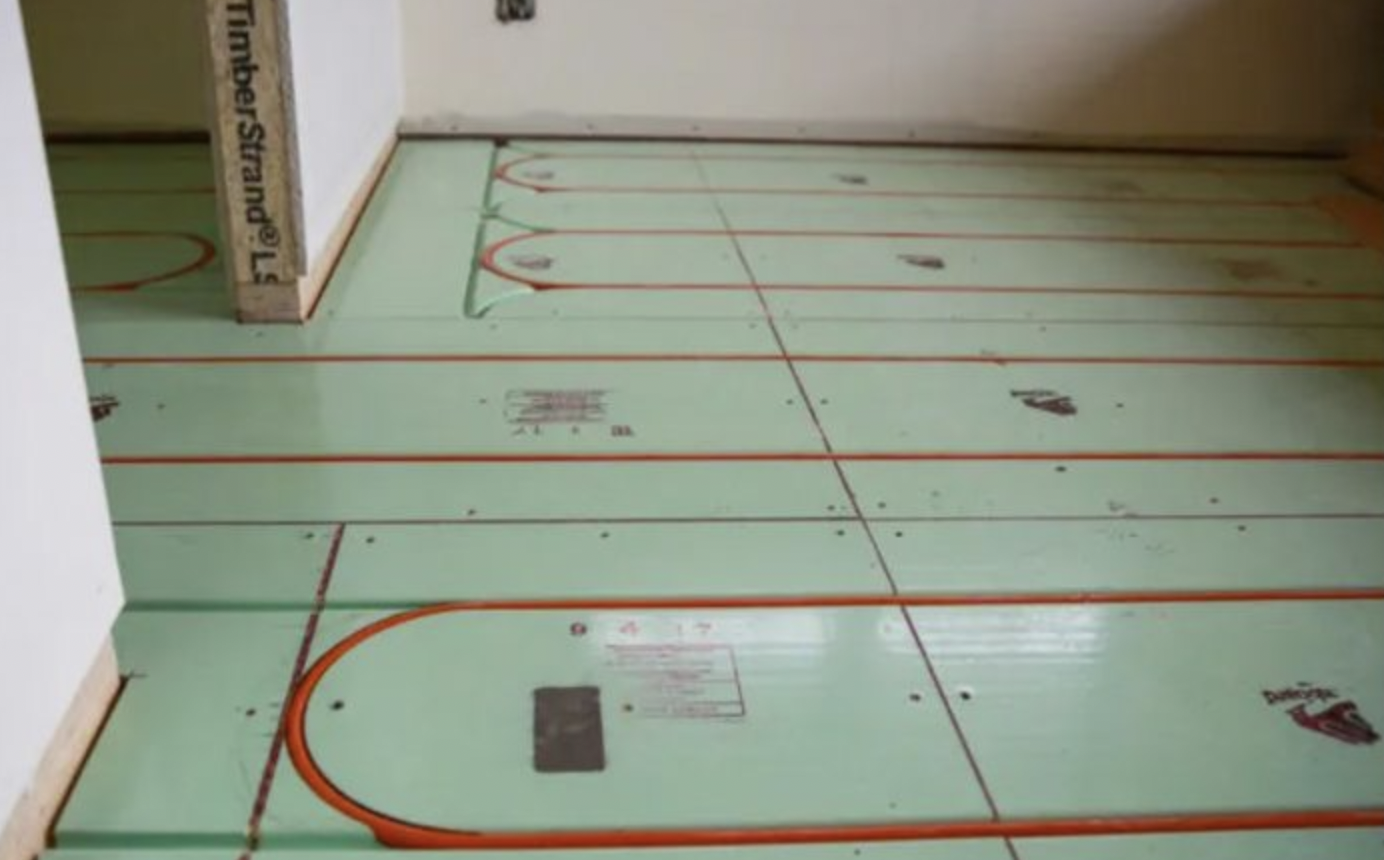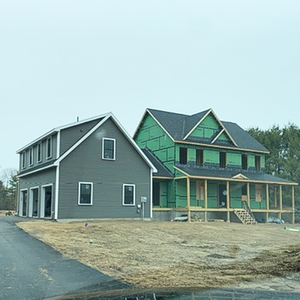Writing from Texas, Xeven says he and his wife are planning their new house, and because of the high price of lumber they are considering insulated concrete forms instead of conventional stick framing.
“As such, we have also been looking into radiation heating/cooling instead of the conventional forced-air systems,” Xeven writes in this recent Q&A post. “Some people I’ve spoken with keep saying that radiant heating is not a good idea in Texas due to the thermal mass of the concrete, stating we’d basically bake ourselves out of our own house.”
Xeven, however, suspects that an ICF house would keep temperatures relatively stable.
As to radiant cooling, the biggest issue in his mind would be the possibility of condensation, a risk when humid indoor air comes into contact with a surface below the dew point. But, Xeven asks, wouldn’t ICF construction be an advantage here as well?
That’s where we begin this Q&A Spotlight.
There are cheaper options
Steve Knapp’s advice is to build what the GBA community calls a “Pretty Good House,” either with conventional materials and techniques or with ICFs. That should keep both heating and cooling loads low, but Xeven should keep his expectations realistic.
“It often seems that people want radiant heat for that toasty-toes feeling,” Knapp says. “You are not likely to get that in a tight house since the system won’t run that much (especially in Texas). With radiant cooling, you will need to be careful about managing indoor humidity levels.”
In any event, Xeven could probably save a lot of money by installing a properly sized force-air heating and cooling system, without sacrificing any comfort.
Does thermal mass matter?
ICF walls consist of inner and outer layers of rigid-foam insulation and a…
Weekly Newsletter
Get building science and energy efficiency advice, plus special offers, in your inbox.
















8 Comments
And now it looks like lumber prices will be coming down before too long!
Radiant cooling panels require a dedicated outdoor air system (DOAS), similar to the CERV2 from Build Equinox. You need to manage the humidity with dewpoint control. Idronics issue 13 from Caleffi describes this in more detail the whole issue deals with hydronic cooling. Based on research from Penn State and Berkeley it looks like this is very efficient.
Interesting discussion. I'm wondering if we can really say with confidence that thermal mass does not affect system sizing. Sure, Manual J doesn't ask you to weigh your house, but that's circular (Manual J doesn't consider it, and Manual J is the method of sizing equipment, therefore it must not matter ...)
Given that system sizing is about peak loads, not overall loads, and my impression is that means that high thermal mass buildings "flatten the curve" of conditioning demands, spreading them out over longer time periods. Would this not mean a lower peak demand?
Of course that might not actually matter, since I guess the question is, "How much thermal mass would be needed to size equipment down"?
And perhaps I misunderstand what the Manual J is reporting ... is it trying to model the absolute peak loads at design conditions (hourly, as implied by btu/h) or is it trying to model the average load over the day at design conditions?
I'm guessing these questions come up more in a hot climate where the loads peak at a predictable time of day and for a relatively short period (ie mid to late afternoon rather than overnight).
Links/references appreciated :)
It's true that thermal mass can, depending on the climate, help allow downsizing equipment because it needn't keep up with the mid-afternoon peak and can recover later at night. But the time period you can average the demand over depends on both thermal mass and insulation level. So you can get the same spreading out the load over time by increasing insulation level or by increasing the thermal mass. Doing it by increasing the insulation reduces both the average load and the peak load, whereas increasing thermal mass only reduces the peak, leaving the average the same. So deliberately buying and installing thermal mass is hard to justify.
>"And perhaps I misunderstand what the Manual J is reporting ... is it trying to model the absolute peak loads at design conditions (hourly, as implied by btu/h) or is it trying to model the average load over the day at design conditions?"
Manual-J is calculating the 1st & 99th percentile binned hourly loads, not the average load over a day, not the absolute peak loads. About 1% of the time or 87 hours in an average year the outdoor temps will exceed the 1% outside design temp, and 87 hours per year will be cooler than the 99% outside design temp. Weather data sets used for HVAC loads look at 20-25 years of temperature bins to come up with those design temps, and periodically updated in the ASHRAE & ACCA tables.
BTU/hr is an instantaneous rate, not an hourly average. It's very common for the immediate BTH/hr rate to slew over a significant range in time spans well under an hour (say when the sun breaks out from the clouds, or when a weather front moves through, etc.). Does a car need to drive for an hour to be running 60miles/hr, or to average 20 miles/hr? The units of time used in a rate expression isn't particularly relevant. The 60miles/hr rate could be expressed in inches per second (the arithmetic will be left as a exercise for the reader) without changing it's meaning, and BTU/hr could be expressed in joules per second, or barrels of oil per century. (Again- you do the math- it's simple arithmetic.)
Thanks Dana. Right, binned hours (and the 99th and 1st percentile). Got it. And thanks for reminding me on the btu/h as a rate.
Indeed I just took a look at a Manual J and the load is in BTU, which is the number of BTU used in the hour that was the 99th percentile.
So, that number is BTUs needed in an hour, which means to meet that load the equipment needs to deliver energy at that rate (ie deliver btu/h). I suppose it could go twice as hard for half an hour, but that wouldn't be comfortable and would be oversized, right? ie the design BTU is then interpreted as the maximum rate (BTU/h) that the equipment needs to deliver. Or am I still getting that wrong?
>"So, that number is BTUs needed in an hour..." "
But it isn't referring to the number of BTUs needed in any given HOUR. Expressing the rate in BTU/hour )rather than joules per second or megatons of TNT per century) is still irrelevant- the instantaneous rate is what matters.
During any given hour at any given the instantaneous rate will usually vary, sometimes by a lot. At the 99% outdoor temp the instantaneous rate could be slightly above the Manual-J's calculation by more than 10% for part of that hour, say when it's dark out and the wind is higher than the default assumptions for the location, yet could drop to 75% of the design rate 15-20 minutes later when the sun rises (streaming heat in through the windows and warming up the exterior surfaces to above ambient) and the wind dies down.
But as long as the equipment can deliver the calculated rate under most conditions, the indoor temperature won't lose ground by very much, and will recover reasonably quickly when it does. If using a 1.4x oversize factor (the ASHRAE recommendation) it never loses ground.
Using HOURLY binned air temperature data it just a convenience, since the higher temperature accuracy of finer resolution (minutes, or seconds) doesn't add meaningful information. The inherent inaccuracy of the estimated U-factors by construction type is much larger than the improved accuracy finer-grained weather data would provide. Indeed, even hourly temperature data is finer than necessary for load calculations, but easy enough to log at weather stations without generating monster sized data sets.
I'm pretty sure that Manual S list 140% as the *maximum* size, not the recommended size. Anything between 100 and 140 is allowed. You could more accurately say 120% is the recommended size.
And that's for conventional heating: for cooling 115% is the maximum. And for a heat pump in a heating-dominated climate, 125%.
Log in or become a member to post a comment.
Sign up Log in